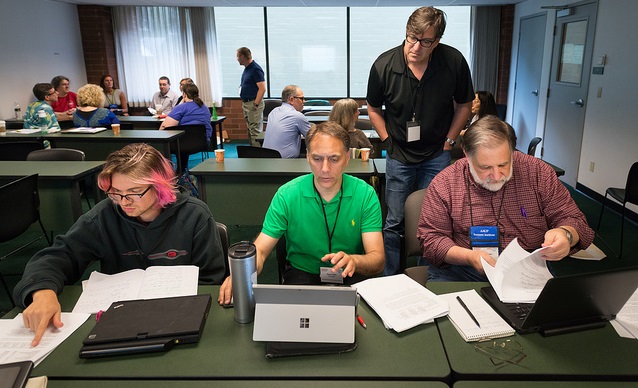- About
- Programs
- Issues
- Academic Freedom
- Political Attacks on Higher Education
- Resources on Collective Bargaining
- Shared Governance
- Campus Protests
- Faculty Compensation
- Racial Justice
- Diversity in Higher Ed
- Financial Crisis
- Privatization and OPMs
- Contingent Faculty Positions
- Tenure
- Workplace Issues
- Gender and Sexuality in Higher Ed
- Targeted Harassment
- Intellectual Property & Copyright
- Civility
- The Family and Medical Leave Act
- Pregnancy in the Academy
- Publications
- Data
- News
- Membership
- Chapters
The Whys and Hows of Building Lists
Why Do We Build Lists of Faculty?
Organizing requires constant communication with members and potential members. This is true whether you’re organizing a new chapter, building membership in an existing chapter, or mobilizing the membership of an existent chapter.
We list faculty because we need to know:
- who is eligible to be a member of the chapter
- what department they are in
- what their job is
- where to locate them for in-person visits
- how to communicate with them by phone and email
How Do We Build Lists?
For each department, we list at least the following information for all faculty:
- name
- job title
- office building and room (for those who have offices)
- best email address
- cell phone number
If you’re lucky, then you already know everyone in your department and will be able to list the information yourself. If not, then this it can be obtained in multiple ways. Some departments will list on their website some or even all of the faculty who teach there. If you can’t obtain it from a website, or if the information on a website is only partial, then you can walk the halls and write down information displayed on office doors.
The lists should be maintained in a database (Excel, Access, or another database of your choice). If you are able, it’s also a good idea to write down office hours each semester, so you’ll be more likely to catch them during office visits.
How Do We Build a List of Those Contingent Faculty Not in Offices?
Sometimes in shared offices, not everyone’s information is posted on the door. In this case, you can pop into the office and ask for information from whomever is present. They can likely give you all the names of everyone in the office and possibly even everyone in their department. Then you can look up the names in the university directory.
Not everyone has an office, though. At times, you might need to hold a meeting of those people you know within a department and ask them to write down the information for everyone they know.
Some faculty do not have offices or don’t spend much time in them. The latter is often due to overcrowding of shared offices or faculty commuting between multiple work sites. In this case, it’s important to try and find them in other ways. You still list them as above, but with the knowledge that in the future you might have to contact them in the following ways (and you should take notes about how best to contact them in the future).
The best way to find faculty who aren’t in offices is to look up their class schedule. You can arrive at their classroom several minutes before the class is scheduled to start and wait until they show up. Or you can arrive at their classroom several minutes before the class is scheduled to end and wait until they exit. In either case, it’s best to introduce yourself and tell them what you’d like to talk about with them. Ask if they have a few minutes to talk right then, and if not ask if there’s a date/time the two of you could meet to talk. Good places to meet are student centers, coffee shops, and school lounges.
If contingent faculty are required to go to a departmental meeting, then that can be a good opportunity to talk to them individually or as a group when appropriate.
If all else fails, and you are unable to get an audience in person, then try calling them if you can obtain their cell number. You can also try emailing, though it’s best to use email to try and schedule and date/time to meet in person. Remember, you’ll always achieve the best organizing results through one-on-one conversations.
Related Resource
- Sample faculty list spreadsheet



